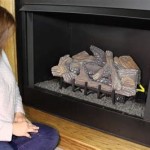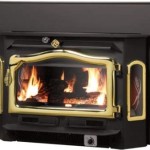Gas Fireplace Rocks and Glass: Aesthetic and Functional Elements
Gas fireplaces offer an attractive and convenient alternative to traditional wood-burning fireplaces. Their ease of use, consistent heat output, and reduced maintenance requirements have made them a popular choice for modern homes. A crucial component of a gas fireplace's aesthetic appeal is the decorative material used to cover the burner. Two of the most common options are gas fireplace rocks and glass.
These materials serve not only a decorative purpose but also contribute to the overall performance and efficiency of the fireplace. The choice between rocks and glass depends on various factors, including the desired aesthetic, functional requirements, and budget. Understanding the characteristics of each material is essential for making an informed decision.
This article examines the properties, benefits, and considerations associated with gas fireplace rocks and glass, providing a comprehensive overview for homeowners considering these decorative options.
The Appeal and Characteristics of Gas Fireplace Rocks
Gas fireplace rocks, often made from ceramic or refractory materials, mimic the look of natural river rocks or lava rocks. Their primary function is to diffuse the gas flame and distribute heat more evenly across the fireplace. The irregular shapes and textured surfaces of the rocks create a more realistic and visually appealing flame pattern than a bare burner would produce.
Ceramic rocks are designed to withstand high temperatures without degrading or releasing harmful substances. They are typically available in various sizes, shapes, and colors to suit different fireplace styles. The neutral tones of many ceramic rock sets allow them to blend seamlessly with a variety of interior designs.
Refractory rocks, another common type, are known for their excellent heat retention properties. They absorb and radiate heat, contributing to a more consistent and comfortable temperature within the room. Refractory rocks are particularly well-suited for fireplaces used as a primary heat source.
The placement of gas fireplace rocks is crucial for optimal performance. They should be arranged in a way that allows for adequate airflow around the burner, preventing carbon monoxide buildup and ensuring efficient combustion. Overcrowding the burner can restrict airflow and negatively impact the fireplace's functionality. Manufacturer instructions should always be consulted when arranging the rocks.
The Modern Elegance of Gas Fireplace Glass
Gas fireplace glass, typically made from tempered or borosilicate glass, offers a contemporary and sophisticated aesthetic. Unlike rocks, glass provides a sleek and reflective surface that enhances the visual impact of the flames. The glass is available in a wide array of colors, from clear and black to vibrant blues, greens, and reds, allowing for customization to match individual preferences and décor.
Tempered glass is heat-resistant and shatter-resistant, making it a safe option for gas fireplaces. Borosilicate glass, known for its exceptional thermal shock resistance, is even more durable and suitable for high-temperature applications. Both types of glass are designed to withstand the extreme heat generated by a gas fireplace burner without cracking or discoloring.
The reflective properties of gas fireplace glass create a sense of depth and dimension within the fireplace. The flames appear to dance and shimmer across the glass surface, adding a touch of elegance and ambiance to the room. The use of colored glass can further enhance the visual effect, creating a unique and personalized fireplace experience.
Installation of gas fireplace glass is relatively straightforward. The glass is typically loose-filled around the burner, allowing for easy removal and cleaning. However, it is important to ensure that the glass is properly positioned to avoid obstructing the burner or interfering with airflow. As with gas fireplace rocks, consulting the manufacturer's guidelines is essential for safe and effective installation.
Key Considerations for Choosing Between Rocks and Glass
Selecting between gas fireplace rocks and glass involves considering various factors beyond aesthetics. One important consideration is the heat output and efficiency of the fireplace. While both materials contribute to dispersing heat, their thermal properties differ. Refractory rocks tend to retain and radiate heat more effectively than glass, potentially making them a better choice for those prioritizing heat output.
Another factor is the ease of maintenance. Gas fireplace rocks can accumulate soot and dust over time, requiring periodic cleaning. Glass, on the other hand, is generally easier to clean and maintain its appearance. A simple wipe with a damp cloth is often sufficient to remove any residue or smudges.
The cost of gas fireplace rocks and glass can also influence the decision. Rocks are generally less expensive than glass, making them a more budget-friendly option. However, the higher cost of glass may be justified by its aesthetic appeal and ease of maintenance for some homeowners.
Finally, it is important to consider the specific requirements and recommendations of the fireplace manufacturer. Some fireplaces may be designed specifically for use with rocks or glass, while others may be compatible with both. Adhering to the manufacturer's guidelines ensures safe and optimal performance of the fireplace. The type of gas used (natural gas vs. propane) can also influence the optimal choice, as some materials may be better suited for one fuel type than the other.
Ultimately, the choice between gas fireplace rocks and glass is a matter of personal preference and practical considerations. By carefully evaluating the characteristics, benefits, and drawbacks of each material, homeowners can select the option that best meets their needs and enhances the beauty and functionality of their gas fireplace.

We Will Be Updating Our Fireplace To Use Glass Rocks Rather Than Logs Outdoor Gas Firepit That Fire

25 Fireplace Decorating Ideas With Gas Logs Electric And Glass Rocks Fire

Lava Rock Vs Fire Glass Blog Fireplace And Chimney Authority

Fire Pit Glass Everything You Need To Know

Lava Rock Vs Fire Glass Blog Fireplace And Chimney Authority

Fire Pit Glass Everything You Need To Know

Black Reflective Fireplace Glass Rocks Fire

How To Add Fire Glass Your Gas Fireplace

Fireplace Doors

Yellow Fireplace Glass And Fire Pit Fireplaces Aquatic Glassel Moderustic








